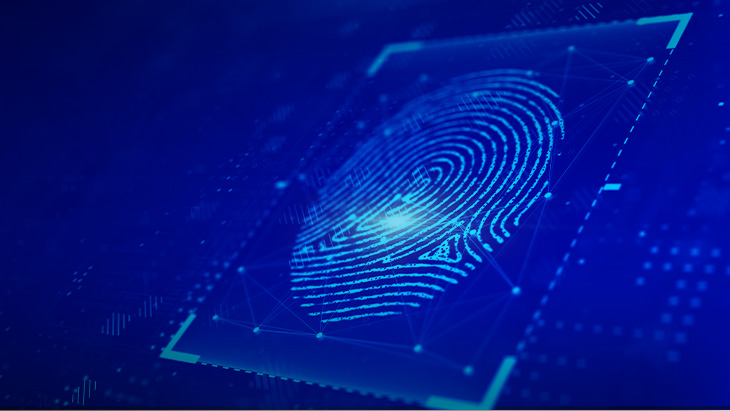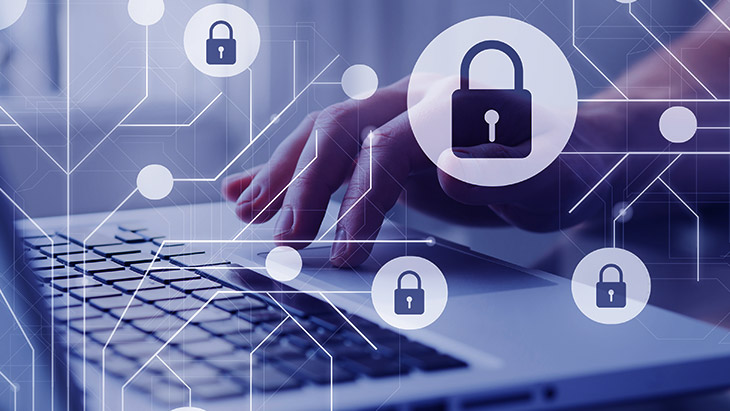
What is Identity and Access Management (IAM)? Why is it Important?
The increasing impact of digital transformation both in everyday life practices and in the business world has made many different elements of data use more significant. Today, it is very precious not only to determine how the data will be stored but also which data and which user can access how and when. Because it is essential to implement access security protocols for critical data stacks very well in order to protect sensitive personal data and not interrupt the sustainability of workflows.
The basic way to correctly implement access and data security protocols are to use a security discipline that allows the right assets to access the right data sources through the right devices. Identity and Access Management (IAM), which makes it possible to assign a single digital identity to each asset in the IT network, thus controlling whether the right users have access to the right data and applications, helps you build an advanced cyber security protocol.
What is Identity and Access Management (IAM)?
Identity and Access Management (IAM), in its simplest form, can be defined as a secure access protocol that allows the right users in the IT network to access the right resources at the right time and for the right reasons. IAM creates an efficient network structure in terms of IT security by allowing accurate resource access in the cyber environment, which is becoming more complex every day as the attack vectors develop.
The relevant protocol, of great importance for the protection of authorized account credentials and passwords, avoids violations by protecting critical data of organizations, and also reduces identity management costs, and automates some of the tasks of IT professionals, increasing efficiency and paving the way for supporting different business ventures. Organizations that use IAM protocols that are compatible with IT infrastructure and have advanced features can have an advantage in a highly competitive environment by following the footprints of digital transformation correctly.
Why Is Identity and Access Management (IAM) Important?
Identity and Access Management (IAM) is not only important in terms of privileged accounts and securely storing the login information of these accounts. A well-structured IAM is also very significant for the smooth functioning of IT infrastructure and the upgrading of business efficiency. An advanced IAM system that best supports zero trust and least privilege approaches makes it easy for your employees to work with high efficiency, regardless of place and time. Based on zero-trust and least-privilege approaches, the system, which allows employees or end-users to access only the areas they need access to, can both increase efficiency and significantly reduce costs when integrated with customers, suppliers, and contractors.
On the other hand, the system in question is also suited to make your IT infrastructure more secure against cyber-attacks. Because IAM provides better protection of critical data stacks by moving security to an advanced level in authorization and authentication processes that directly concern users in the network. This blocks hackers who want to plant ransomware or damage your IT infrastructure with other malware from reaching their targets.
Finally, you should keep in your mind that compromised credentials are an entry point into your IT infrastructure. Identity and Access Management applications decrease the number of attack points from which cyber attackers can infiltrate your network by securely keeping the login information of standard users and privileged accounts on the network. Also, the relevant systems perform at a high level in password management, significantly preventing the use of easy-to-break passwords in the IT infrastructure.
Key Points of IAM: Authentication and Authorization
There are two key points of IAM solutions. The first of these, authentication, is used to verify the identity of an entity in the IT network or trying to log in to the IT network. The basic authentication process takes place when a user enters their user name and password into the system. At this point, IAM gets involved and scans the database, and controls whether the current information of the user who wants to enter the system matches the data in the database.
For example, Single-sign-on (SSO) solution builds a successful authorization process, enhancing productivity and creating a seamless data flow for employees. In IT networks where this solution is preferred, once the user uses the user name and password while logging in to the system, he/she will have multiple application access and can switch between them without having any problems. In addition, multi-factor authentication and risk-based authentication are also highly effective in improving network security.
Multi-factor authentication requests real-time verification from the user by sending short-term codes in addition to the username and password.
Authorization refers to the authorization stage of the users verified by the advanced security protocols of the IAM. The authorization process in IAM systems can be considered on the basis of access to data, editing, and viewing authorizations. A properly configured IAM system can offer multiple alternatives for authorization processes in your IT infrastructure . IAM systems can be used in an integrated manner with Privileged Access Management (PAM) solutions, which are based on zero trust and the least privilege approach in the authorization. This allows you to easily set privileges when checking identity and access.
What to Consider in Your Identity and Access Management (IAM) Strategy
We can list the steps you need to pay attention to for the proper configuration of Identity and Access Management (IAM) as follows:
- Central identity management: Managing access to databases and your organization's digital resources at the identity level necessitates a centralized identity management application. Thanks to these applications, you can make your identity management easier and more secure within the organization in cases where you need to move users from other systems or at least work in sync with other user directories such as the Human Resources directory in your IAM environment.
- Secure access: Since identity-level security is important, you must ensure that your IAM application adequately and efficiently authenticates logins, such as login attempts, location verifications, and time and device verifications.
- Policy-based controls: Users should be authorized to perform only necessary tasks and should not be given more privileges than necessary by applying security policies such as the principle of least privilege. The form of identity and access management that you will implement should be designed to give users access to resources based on their job role, department, or other feature that seems appropriate.
- Zero trust: Zero trust policy means that IAM solution of an organization continuously monitors and secures the identity and access points of its users. In the past, organizations operated on the principle of "once you log in, you have access", but zero trust policies provide that each member of the organization is constantly verified and their access is managed through authorization mechanisms. You can also decrease the internal threat rate in your organization by creating security protocols that are in line with the zero-trust approach.
- Secure privileged accounts: Due to different privilege needs, all accounts in the access management system do not have equal privileges. You should plan by paying attention to privileged accounts and recognized privileges that have access to private tools or sensitive information.
- Training and support: You should provide training to the users who will be most interested in the product, including identity and access management providers, users, and administrators, and ensure that this training support is maintained in new versions to be released and new features to be added for the long-term health of their users from the stage of IAM installation.
Tools that Need to be Integrated into the Identity and Access Management (IAM) Process
SSO and MFA, which we mentioned in the previous parts of the article, are the tools that must be included in the construction of IAM systems. MFA allows you to enable location, time, and biometric data verification in addition to standard verification methods, while SSO, on the other hand, means that users can log on to the network only once, after logging in once they can switch to the software they have access to. This solution facilitates the portal handling of software packages.
The third component that needs to be integrated into the process is the Password Vault feature. The relevant feature, which ensures that the passwords of the users in your IT infrastructure are kept in an encrypted vault isolated from the network, maximizes password security to the next level. As a matter of fact, thanks to this feature, it becomes very difficult for cyber attackers threatening the network to reach a security architecture built in isolation from the network.
Privileged Access Management (PAM) solutions, which include solutions such as Password Vault and Session Manager, which are among the indispensable applications in Identity and Access Management processes, also involve MFA and AAA (authorization, authentication, accounting) products. As Kron, we combine advanced cyber security protocols PAM, MFA, AAA protocols in our Single Connect and Marta AAA products.
In order to benefit from all these solutions in a holistic way, you can contact our expert colleagues to learn about Kron solutions PAM, MFA and AAA technologies preferred by the leading companies of their sectors worldwide.
Other Blogs









